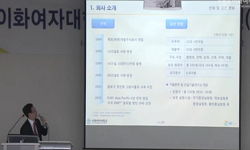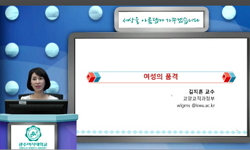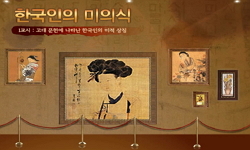The status of home-brew liquor in Korea has changed many times through history. In traditional society, home-brew liquor was considered as food. However, during Japanese colonial period, it became a moonshine and home brewery was prohibited. Since the...
http://chineseinput.net/에서 pinyin(병음)방식으로 중국어를 변환할 수 있습니다.
변환된 중국어를 복사하여 사용하시면 됩니다.
- 中文 을 입력하시려면 zhongwen을 입력하시고 space를누르시면됩니다.
- 北京 을 입력하시려면 beijing을 입력하시고 space를 누르시면 됩니다.
https://www.riss.kr/link?id=T11616847
- 저자
-
발행사항
전주 : 전북대학교 대학원, 2009
-
학위논문사항
학위논문(석사)-- 전북대학교 대학원 : 고고문화인류학과 2009. 2
-
발행연도
2009
-
작성언어
한국어
- 주제어
-
발행국(도시)
전북특별자치도
-
기타서명
Social-cultural Meanings of Revival of Traditional Liquors
-
형태사항
iv, 117p : 삽도 ; 26cm
-
일반주기명
전북대학교 논문은 저작권에 의해 보호받습니다.
지도교수:함한희
참고문헌 : p.110-117 - 소장기관
-
0
상세조회 -
0
다운로드
부가정보
다국어 초록 (Multilingual Abstract)
The status of home-brew liquor in Korea has changed many times through history. In traditional society, home-brew liquor was considered as food. However, during Japanese colonial period, it became a moonshine and home brewery was prohibited. Since them, home brewery in Korean tightly controlled by government. However, recently home-brewery draws people's and government's attention as a way of revival of Korean tradition. In this study, I focus on the changes that home-brew liquor has gone through in the course of modern history and try to figure out the social and cultural meanings of it. For this study, I have investigated several kinds of home-brew liquor and their manufacturers from March 2007 to September 2008.
The time when home-brew liquor was mostly prospered was the period of Chosun dynasty. There were two main reasons. One was that liquor was one of the required food for ceremonial ritual in those days when society and culture were based on Confucianism. And the other one was that liquor helped people and communities get together. However, home-brew liquor and its related-culture were put in danger under Japanese colonialism. Japan prohibited home-brew liquor and Western liquors started introduced to Korea. And even after the Independence from Japanese colonial government, home-brew liquor was still prohibited due to the food shortage at that time. Since 1980s, eventually home-brew liquor, which had been hidden and passed down, started mentioned as traditional liquor, not as moonshine. And these interests in traditional liquor led to designate home-brew liquor as one of Intangible Cultural Properties and the manufacturer as a faculty owner. These efforts to revive traditional liquors brought many changes and reestablished the status and meaning of the traditional liquor.
In this study, I arrange the sequence of changes in concept of tradition depending on the governmental policy change. After that I study the change in perception to liquor from an important food to favorite food.
Unlike modern society in which negative aspects of liquors have been largely focused, during the period of Choson dynasty, liquor was a food for rituals and guests. At that time, women's role was making liquor and men's role was consuming it. However, these days some men put efforts into brewing traditional liquors. The revitalization of traditional liquor gave it new meanings and enables it to become a cultural capital with its legitimacy and authenticity. As a result, traditional liquor manufacturers spontaneously have possessed power. Even though there has been a change in men's role from consuming liquor to manufacturing it, men are still the main consumers in rituals. In the past, man who consumed liquors had economical hegemony and in modern time, man who manufactures liquor has the hegemony. So in both Choson dynasty and modern time, men possess hegemony in their families. And also when it comes to liquor, even though there have been some changes in men and women roles, it is evident that men has held controls upon their families.
목차 (Table of Contents)
- Abstrct = 1
- 제1장 서론 = 5
- 1. 연구배경 및 연구목적 = 5
- 2. 선행연구 검토 = 9
- 3. 연구방법 및 현지조사과정 = 21
- Abstrct = 1
- 제1장 서론 = 5
- 1. 연구배경 및 연구목적 = 5
- 2. 선행연구 검토 = 9
- 3. 연구방법 및 현지조사과정 = 21
- 3-1. 연구의 방법 = 21
- 3-2. 현지조사과정 = 23
- 4. 논문의 구성 = 28
- 제2장 연구 대상 개관 = 30
- 1. 죽력고(竹瀝膏) = 30
- 2. 이강주(李薑酒) = 36
- 3. 백화주(百花酒) = 39
- 제3장 가양주의 역사 = 43
- 1. 조선시대 = 43
- 1-1. 가양주의 발전 = 43
- 1-2. 어느 양반가의 가양주 = 46
- 2. 일제강점기 = 49
- 3. 해방이후 = 55
- 4. 1980년대 이후 = 56
- 제4장 전통주 복원의 사회문화적 의미 = 60
- 1. 전통주(傳統酒)의 재개념화 = 60
- 1-1. 전통주의 분류 = 60
- 1-2. 전통주의 개념 = 68
- 2. 음식에서 기호품으로 = 75
- 3. 술 제조에서 남녀의 역할변화 = 82
- 3-1. 술빚기와 젠더 = 82
- 3-2. 남성들의 술 빚기와 문화재생산 = 88
- 4. 전통의 복원과 문화자본화 = 102
- 제5장 결론 = 106
- 1. 연구 결과 분석 및 요약 = 106
- 2. 연구의 의의 및 한계 = 109
- 참고문헌 = 110












